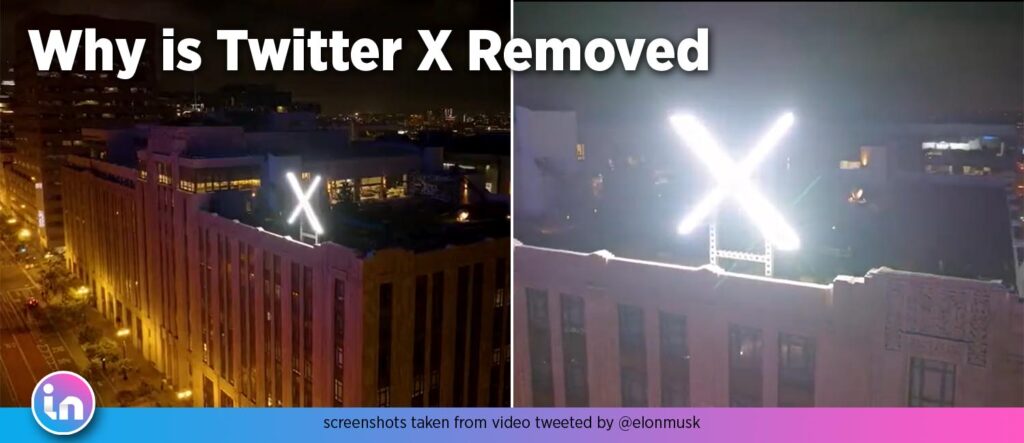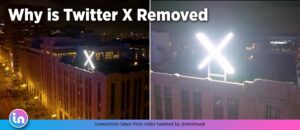Why is Twitter X Sign Taken Down After San Francisco’s Permit Disapproval?
Discover why is Twitter X Sign was taken down in San Francisco after the city’s permit disapproval. Unravel the reasons behind the removal and the impact on Twitter’s branding.

The city of San Francisco took action on Monday, leading to the removal of Twitter’s new “X” sign installed above its building. Discover why is Twitter X taken down. The giant, flashing sign was the latest addition to the social media platform’s rebranding efforts. However, the city’s Department of Building Inspection received 24 complaints, citing concerns about the sign’s structural safety and illumination. As a result of the permit violation, the sign was taken down, emphasizing the significance of adhering to building regulations.
Why is Twitter X taken down: Permit Violation and Safety Concerns
The San Francisco Department of Building Inspection acted promptly upon receiving 24 complaints concerning the new “X” sign at Twitter’s headquarters. Among the complaints were worries about the sign’s structural illumination, which raised safety concerns for the public and the building itself.
While a building permit is typically required to dismantle such signage, the department allowed the removal to proceed due to the paramount importance of ensuring safety. Patrick Hannan, a spokesperson for the department, confirmed that the removal was permitted under these circumstances.
Twitter’s Rebranding Efforts
The flashing “X” sign was part of Twitter’s rebranding campaign, aimed at refreshing its visual identity and fostering a new era for the social media platform. This rebranding initiative came after the announcement of sweeping changes to enhance user experience and adapt to evolving trends.
City Inspector’s Intervention
Less than three days after the “X” sign was installed, a city inspector visited Twitter’s headquarters to address the permit violation and assess the sign on the building’s roof. However, the representative of the company denied access, claiming the structure was simply a temporary lighted sign for an event. The inspector clarified that any signage without a permit must be removed in accordance with city regulations.
The city inspector made another attempt to access the roof on the following day, but access was once again denied by the tenant, which further escalated the issue.
Twitter’s Response to Allegations
Despite the mounting concerns and the city’s intervention, Twitter remained silent, not immediately responding to NPR’s request for comment. Amidst the controversy, a tweet surfaced, accusing San Francisco authorities of attempting to force Twitter’s owner, Elon Musk, to remove the “X” sign. In response, Musk reacted on Saturday with a tweet featuring a laughing-crying emoji, which left room for interpretation and speculation.
The Importance of Complying with Building Regulations
The incident surrounding the removal of Twitter’s “X” sign serves as a crucial reminder of the significance of adhering to building regulations and obtaining the necessary permits for architectural modifications. For companies undergoing rebranding efforts or making structural changes, it is imperative to seek proper authorization to avoid complications, potential fines, and damage to their brand image.
Conclusion
The removal of Twitter’s “X” sign above its San Francisco headquarters sheds light on the importance of adhering to building regulations and obtaining the required permits. The incident serves as a reminder to businesses, big and small, of the necessity to comply with local laws and regulations, even during rebranding endeavors. While Twitter’s rebranding efforts aim to revitalize the platform’s image, the incident reinforces the significance of following the law to maintain a positive reputation and demonstrate corporate responsibility.
By proactively addressing permit violations and maintaining open communication with local authorities, businesses can avoid potential conflicts and ensure that their initiatives are well-received by the public and the city they operate in. As technology companies continue to shape urban landscapes, collaboration with local governments becomes increasingly vital for a harmonious coexistence between innovation and regulation.





